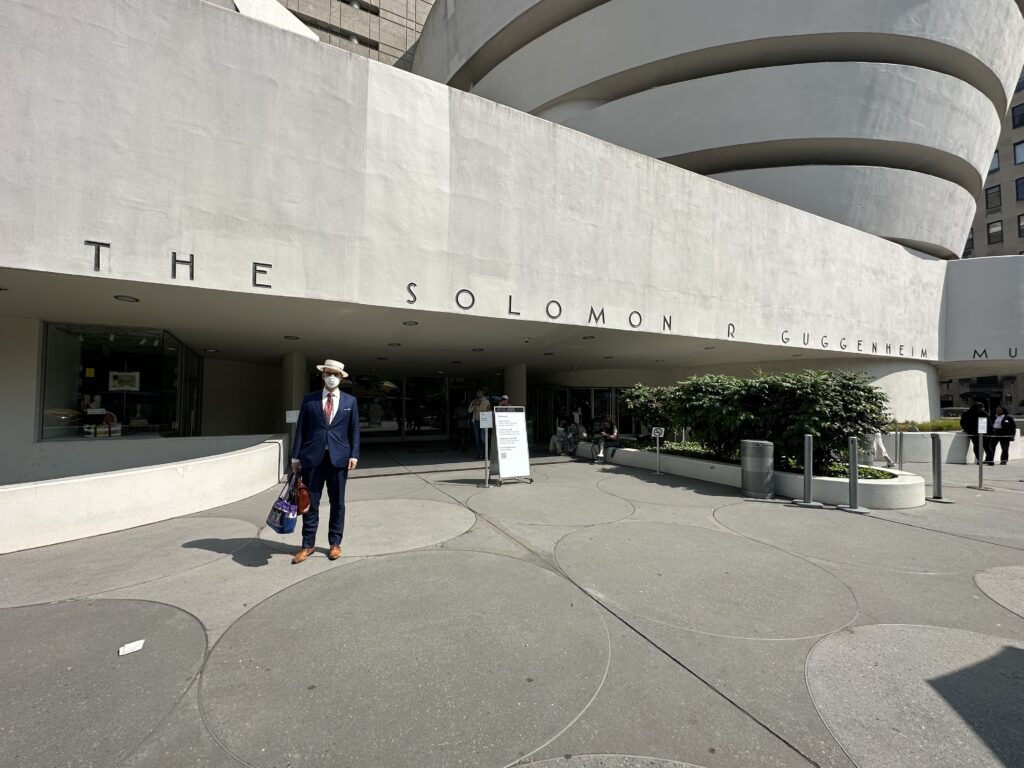(To be read alongside Network Law Review’s symposium on New Brandeisianism.)

There is probably no single economic issue that has a better progressive pedigree than inflation. The socialist John Maynard Keynes invented macroeconomics, the field devoted to managing it. And the policy responses that socialists like Keynes have rendered mainstream are, well, radical. Whether they involve manipulating interest rates, wages, or the terms of sale of consumer goods, they all have one thing in common: direct regulation of prices, which is a cousin of central planning.
When inflation hit America in 2021, one might, therefore, have expected the progressives in the Biden Administration to appeal to this tradition and make interest rate policy, price controls, or perhaps windfall profits taxes the centerpiece of their response.
Instead, they called for antitrust action.
Of course, it was bonkers.
There was no evidence that the economy had become more concentrated overnight, enabling firms to raise prices all at once in 2021. The Biden Administration argument that monopolies needed the pandemic as an excuse to raise prices was wishful thinking, not to mention self-defeating. If monopolies need excuses to raise prices, then the harm of monopoly is a problem of public education and antitrust might usefully be replaced with a U.S. Department for the Debunking of Corporate Excuses.
Why did progressives respond (and continue to respond) to inflation in such a quirky way?
The answer is that elite progressive policy circles have been captured by New Brandeisianism, a movement with origins in neither the progressive grassroots nor progressive thought that rode a wave of journalistic antipathy toward the tech giants into a position of influence in the Biden Administration. New Brandeisianism is not so much a progressive movement as a newspaper-promoted simulacrum of one, capable only of recursively applying the monopoly frame to every problem that comes its way—from inflation and low wages to Taylor Swift.
At least when the political stakes are low.
The vacuity of New Brandeisianism can be read in the odd and self-defeating policies that have emerged from its monopoly fixation. But it can also be seen in the way that fixation has seemed to evaporate when it comes to the most important challenge to social justice of our time: America’s ongoing genocide and colonization of Palestine via the State of Israel. New Brandeisianism’s failure to object to eight months of genocide that, as we shall see, easily fit within a monopoly frame speaks to the movement’s empty character.
Neither a Popular Movement Nor an Intellectual One
Before the rise of New Brandeisianism, progressives had always been aided in their quest for substantive equality by richly articulated theoretical traditions, ranging from Marxism to law-and-economics—the latter a field that progressives themselves founded a century ago, long before it became associated with conservatism in the 1970s and 1980s.
The story of how progressives came to forsake theory in favor of New Brandeisians’ monopoly mantra has not yet been fully told. But we can learn a lot about the character of New Brandeisianism by considering that from which it did not emerge.
Scratch the surface of the movement that brought America the New Deal and you find both a rich intellectual canon populated by thinkers like Robert Hale and grassroots movements like the Grange and American labor.
Scratch the surface of the movement that rolled back the New Deal and it is scholars all the way down (with a corporate-funded turtle or two thrown in for good measure). Love them or hate them, the Chicago School was, well, a school—populated by thinkers ranging from George Stigler to Gary Becker, who left oeuvres that continue to be studied today.
But scratch the surface of New Brandeisianism and one finds: nothing.
The movement has no roots in academia. The aging community of progressive antitrust scholars was blindsided by the rise of New Brandeisianism in 2018—and were an object of New Brandeisians’ contempt, not least because of their reliance on economics.
Moderate and conservative antitrust scholars, locked in the ivory tower (or corporate boardrooms on consulting gigs), assumed that if New Brandeisianism wasn’t coming from them it must be coming from the people. These scholars thought they were putting New Brandeisians down by calling them “populists”. Instead, they inadvertently attributed to New Brandeisians a provenance that New Brandeisians did not deserve.
There is no movement of working Americans against monopoly, no matter how hard New Brandeisians try to fudge the difference between abstract public antipathy toward big business and non-existent public antipathy toward monopoly.
Americans care about paychecks and prices, not whether the firm that’s overcharging or underpaying them happens to be the only seller in a properly defined relevant market—or happens to have a large share of sales in a particular NAICS code.
A Movement of Obscure Origin That Was Made by the Press and Is Badly Out of Step with Progressive Thought
If New Brandeisianism sprang neither from the gown nor the town, then where exactly did it come from? The answer is: no one seems to know.
But there are a few suggestive data points.
One is that many of the major protagonists belong to the same clique associated with the Open Markets Institute and satellite groups like American Economic Liberties Project and the Institute for Local Self Reliance. FTC Chair Lina Khan got her start at Open Markets before going to law school. Antitrust Division head Jonathan Kanter is an Open Markets friend.
Another is that the press seems to have made the movement. Starting in 2016, around the time that the newspaper industry started pressing the tech giants to pay for news, the press started relentlessly promoting Open Markets people and policies. This campaign turned a backwater of legal policy that many thought would disappear with the retirement of boomer antitrust scholars into a cause célèbre for elite progressives.
The best one can tell based on these data points is that New Brandeisianism started out as an attempt by a few think-tankers and journalists to use the monopoly concept to explain their world.
Think of the sort of “big idea” nonfiction books sold at airports—but without the popular appeal. One can imagine the gears turning in New Brandeisian heads: Big firms claim that they are big because they provide better goods than the competition. But maybe the truth is that they are big because they have used dirty tricks to destroy the competition and become the only sellers in their markets!
At first glance, this looks like a useful progressive frame. But there’s a reason why a century of progressive thought always avoided taking this logic as a centerpiece: It’s wrong.
While there are plenty of firms that get big by monopolizing markets, there are also plenty of firms that get big by making better products. And here’s the thing: both kinds of firms charge high prices and create inequality so progressive policy shouldn’t turn on whether a firm happens to be a monopoly or not.
Whatever one might think about Apple today, it’s hard to make the case that the company’s meteoric rise in the years after 2007 was due to dirty tricks rather than creating the smartphone as we know it. But the fact that Apple got big by being better doesn’t mean Apple should be allowed to charge exorbitant prices for its products.
In fact, progressives’ key insight from a century ago is even more profound. Progressives showed that even perfectly competitive markets inhabited by small businesses can create massive inequality.
Competition does not eliminate profits because some firms will always have lower costs than others. Because the competitive price is determined by the firm with the highest cost in the market (otherwise that firm wouldn’t be in the market), the competitive price is an above-cost price for all the other firms in the market. And above-cost prices mean windfall profits for the firms that are lucky enough to be able to charge them.
Financial markets are some of the most competitive markets in existence, with large numbers of buyers and sellers trading on centralized exchanges. And yet people get rich trading securities all the time.
The implication was that antitrust could at best play a minor part in any progressive agenda aimed at redistributing wealth. To attack the prices charged by big firms that had gotten big by being better, or that were getting rich in highly competitive markets, progressives would need other tools, like price regulation and taxation.
In such markets antitrust would be ineffective at best, and when it came to breaking up genuinely productive firms, affirmatively harmful.
What is more, price regulation and taxation can also be used to eliminate the profits earned by monopolies, thereby eliminating the incentive of firms to monopolize markets. So a progressives don’t need antitrust at all in order to achieve their goals.
No wonder the centerpiece of the New Deal—American progressives’ greatest policy triumph to date—was price regulation (fully a quarter of the American economy was price regulated in the mid 20th century), taxation, and redistribution of the proceeds of taxation via massive spending programs. Antitrust was an afterthought.
If the current resurgence of progressive interest in inequality had been allowed to grow organically, it probably would have coalesced around the same tried and true pillars of progressive policy. One sees that rather clearly, for example, in Thomas Piketty’s observation in Capital in the 21st Century, the book that kicked off the resurgence in progressive interest in inequality.
Piketty argued that growing inequality “is not the consequence of any market ‘imperfection.’” The problem is not monopoly, but markets themselves. And the solution, he argued, would be radical tax increases.
But the progressive response to inequality has not developed organically. Instead, New Brandeisians’ superficial view that monopoly explains everything was catapulted to elite, if not popular, stardom by news industry executives trying to use antitrust to smite the social media competitors that were eating newspapers’ advertising revenues.
Wedded to an Abstraction But Lacking a Theoretical Foundation
New Brandeisianism’s provenance explains its weird combination of attachment to an abstraction—the concept of monopoly—and lack of theoretical structure to support the abstraction.
If it were a popular movement, New Brandeisianism would have been built around the concrete deliverables that people care about, like higher wages and lower consumer prices. But New Brandeisianism is instead an elite project that deals in the elite cultural currency of abstraction—in this case, the concept of monopoly.
But despite its affinity for an abstraction, New Brandeisianism is not an intellectual movement, even if the public profile given the movement by the press has attracted some academic hangers-on.
If New Brandeisianism were an intellectual movement, monopoly would be the conclusion of a chain of reasoning that could be adjusted and redeployed to reach different conclusions depending on the problems the movement might be asked to consider. New Brandeisians would be able to propose something new and creative to fight inflation, to drive up wages, or to bring down the price of concert tickets.
New Brandeisians do not have a chain of reasoning upon which to draw for new ideas because the movement has never needed one. Unlike progressive scholars of a century ago, or the Chicago School, the New Brandeisians did not achieve their position by running the gauntlet of ideas. They achieved it by happening to say what a powerful industry liked to hear.
All they have is monopoly. So they see it everywhere.
If this seems to you unfair, it may be because you haven’t spent much time with New Brandeisian texts.
They say things like: “monopolies undermine everything”.
Misunderstanding Self-Preferencing
Inadvertently Condemning Production
New Brandeisians’ lack of a theory has not only made the movement into a man with a hammer. It has also prevented the movement from generating a coherent theory of anticompetitve conduct.
New Brandeisians argue that big firms monopolize markets by engaging in what New Brandeisians call “self-preferencing”: big firms discriminate in favor of their own products on the platforms that they run.
The problem with the self-preferencing concept is that, when you think about it, literally everything a firm does counts as self-preferencing.
Whatever a firm does in-house excludes outsiders who might have been willing to do that same thing and sell the component directly to consumers. You can’t produce so much as a widget without giving yourself preferential access to your own platform.
So by deploying self-preferencing as their theory of what counts as bad conduct by a monopolist, New Brandeisians render the conduct requirement meaningless. Every firm satisfies it just by making products.
Not coincidentally, this allows New Brandeisians to go back to chasing after monopolies as evils in themselves.
Only, New Brandeisians don’t seem to understand that self-preferencing plays this reductive role for them. They actually seem to think favoring your own products on your platform is an independent wrong.
To a New Brandeisian, it sounds plenty evil when Amazon makes the company’s own products appear first in searches on Amazon.com, making it harder for consumers to find other sellers’ products on the website.
But Amazon also self-preferences in a zillion other ways that New Brandeisians don’t seem to notice, much less condemn, because that would put them in the position of condemning production itself.
For example, Amazon also self-preferences when the company features the design elements of its in-house web design team on its website rather than letting customers buy designs from third party programmers and apply them to the site.
You can download new themes for the Firefox web browser, but not for Amazon.com. Amazon’s in-house design team benefits—to the complete exclusion of third-party web designers.
The same can be said for every other thing that Amazon does.
New Brandeisians aren’t finding bad behavior when they identify self-preferencing. They’re finding behavior.
There might be something wrong with Amazon’s favoritism of its products in search results, but the problem is not self-preferencing.
New Brandeisians are unable to say what the problem is, however, because they have no theory to support their concept of monopoly.
The Concept of Monopoly Leveraging Doesn’t Help
The more intellectually sophisticated antitrust progressives of the older generation might trying to bail out New Brandeisianism by responding that self-preferencing is bad when it leads to further monopoly.
When Amazon self-preferences on advertising, Amazon takes a step toward driving third-party sellers from its website, and because most e-commerce is done on Amazon’s website, that amounts to monopolization of the entire e-commerce industry.
By contrast, Amazon is far from the only website on the Internet. Excluding web designers from Amazon.com does not enable Amazon to monopolize the entire web design market.
The trouble with this argument is that for any two actions that a firm takes that do not monopolize markets, we can usually form a combined action that does monopolize the market for the product of that action but which New Brandeisians do not condemn.
Amazon excludes third party web designers when Amazon designs its own website. And when Amazon picks its own cardboard box suppliers, Amazon excludes third party box makers who might otherwise have wanted to sell you the boxes in which Amazon ships your purchases.
Neither of these acts monopolizes markets, however, because there are lots of web designers and box suppliers out there.
But there’s no reason why we should think of web design and box making as separate products. Amazon uses them both and we can just as easily define web-design-plus-boxes as a composite product that Amazon makes for itself in-house.
If Amazon were to allow consumers to choose their own web-design-plus-boxes bundles, we can be pretty sure companies selling those bundles would emerge. But there are none out there in the world today, because Amazon makes that bundle for itself in-house.
What that means is that Amazon’s self-preferencing in web design-plus-boxes bundles completely monopolizes the market for such bundles—so much so that we don’t even recognize that bundle as a possible product that might be sold in a market.
But you will never find a New Brandeisian, or anyone else, condemning Amazon for monopolizing the market for such a bundle.
From which it follows that whatever criterion New Brandeisians might be using to distinguish between the self-preferencing that New Brandeisians find viscerally wrong, and the self-preferencing that they do not notice, it is not that the self-preferencing threatens to make the actor the only supplier in some market.
The vast majority of all possible markets don’t exist at all because some firm somewhere made a decision to produce some combination of inputs in-house.
That’s not a problem. That’s production.
Does this mean that there is no principled way to distinguish between good and bad conduct? Of course not.
I have suggested elsewhere that what judges actually do in deciding antitrust cases is quite sensible: they ask whether the self-preferencing improves the product.
If consumers would do a better job picking a particular component than a firm does in making the component in-house, then courts should insist that the firm let third party makers of the component onto its platform.
More generally, we want markets for components when the market would do a better job of choosing the component than would the firm. But when the firm would do a better job—which is most of the time, since we don’t want to assemble every part of each product we use—we want the firm to choose the component.
But don’t expect New Brandeisians to show interest in an approach that suggests that they are in the business of product design rather than slaying dragons.
Mistakenly Attacking the Firms That Best Reflect Their Values
If New Brandeisians aren’t targeting all forms of self-preferencing (because they can’t) and they aren’t targeting self-preferencing that threatens to eliminate all the competitors in a market, or self-preferencing that prevents consumers from picking better products, then what kinds of self-preferencing do New Brandeisians tend to notice and call out?
As you might expect of a group that lacks a systematic approach to the problem, New Brandeisians call out the most visible kinds of self-preferencing.
And unfortunately for competition, the most visible kinds of self-preferencing are carried out by the firms that have chosen to allow some third party competition on their platforms.
The result: New Brandeisians tend to attack the most pro-competitive firms.
New Brandeisians would not have noticed Amazon’s self-preferencing if Amazon had chosen to be like most other major retailers and not allow third parties to sell on its website at all.
Home Depot never allows third-parties to sell tools in its stores or on its website. This is a far more extreme form of self-preferencing than Amazon’s demotion of third parties in search results. Third parties do not appear in Home Depot search results at all—because they are simply not allowed to sell on Home Depot’s platform.
New Brandeisians have never objected. And they never will—unless Home Depot makes the same mistake as Amazon and starts allowing some competition on its platform.
Doubling Down on a Rookie Mistake: The Apple Case
New Brandeisians aren’t unique in mistakenly taking a shine to self-preferencing.
Every new antitrust student walks this intellectual path. He starts by thinking that every exclusion of a competitor should be an antitrust violation and ends by recognizing that power is constitutive of production. It becomes clear to him that he must distinguish between good exercises of power and bad ones. He cannot proceed by condemning power as such; he must find some other criterion to condemn.
What makes New Brandeisians special is that unlike most antitrust students, they seem intent on doubling down on their mistake, bringing the same self-preferencing charge against tech giant after tech giant.
Consider the recent case against Apple.
For four decades, computer markets—and the smartphone markets that grew out of them—have offered consumers a choice between two basic approaches to product design.
One is a closed architecture in which the manufacturer produces all of the components of the product in-house. This is the model followed by Apple, which has a history of engineering every component of its computers and smartphones. Under this approach, self-preferencing is king.
The other is an open architecture approach, in which firms platformize their products, allowing consumers to swap in third-party versions of many parts of their devices. This is the approach of PCs and Android smartphones. There is less self-preferencing here (more precisely, since all in-house production is self-preferencing, in this case the self-preferencing is spread around more firms).
You can see the contrast between the approaches in the way Apple and Android handle phone batteries.
You cannot replace the battery on an Apple phone. Apple effectively excludes third-party battery makers and engages in self-preferencing with respect to its own batteries. But some Android smartphones still come with replaceable batteries. You can buy a battery made by a third party and swap it into the phone.
The fact that both architectures have coexisted in the market for so long tells you that each has advantages. Some people value configurability whereas others hate choices and want a machine that just works. Some want more self-preferencing. Others want less.
The obvious conclusion is that self-preferencing isn’t a problem. It’s a product characteristic.
But six years after New Brandeisians hit the national stage, they are still targeting self-preferencing as such.
In their complaint against Apple, New Brandeisians in the Biden Administration attack an apparently random assortment of examples of self-preferencing by Apple, including Apple’s choice to favor text messages from Apple phones with a blue color and to relegate texts with Android phones to green.
But the infinity of other acts of self-preferencing that make up Apple’s phones (or any other product, including PCs and Android phones) go unchallenged. Why should Apple be allowed to design its own CPUs, to the exclusion of CPUs made by others?
And how about those Apple batteries?
Another Bad Fit: Ticketmaster
Self-preferencing and inflation are not the only examples of the problems that result from New Brandeisians’ theory deficit.
The case against Ticketmaster, brought by New Brandeisians in response to public outcry over the price of Taylor Swift tickets, is another one.
Here again you can imagine the gears turning in New Brandeisian heads. Taylor Swift ticket prices are high and . . . monopoly ruins everything . . . so, is there a big firm in this equation? . . . Yes, Ticketmaster! . . . Solution: break it up!
You have to wonder what New Brandeisians will do once they have broken Ticketmaster up and ticket prices have not come down.
It might occur to them that the problem is not the middleman but the most obvious bottleneck in that supply chain: Taylor Swift herself.
Then what? Will they sue to break her up?
Perhaps.
If New Brandeisians have been able to keep a straight face for three years while calling for antitrust action against inflation, then they can call stardom monopolization, too.
One wonders what the details of the claim might be—maybe that in refusing to license her name out to ghost performers but instead insisting on performing under her own name Swift engaged in self-preferencing.
New Brandeisianism’s Silence about Zionism: Fear or Loathing?
The most telling thing about New Brandeisians of late has not been what they have done but what they have not done: and that is not to condemn America’s ongoing colonization and genocide of Palestine via the State of Israel.
To understand the significance of New Brandeisians’ silence on this question it is important to recall the universality that New Brandeisians attribute to monopoly as an explanatory device. They have directed a self-righteous fury at virtually every corner of public policy, attributing to monopoly everything from poverty to low wages, rapacious banking, unhealthy food and Donald Trump.
Moreover, after Google forced New America to cut ties with Open Markets, New Brandeisians presented themselves as willing to risk their jobs to stand up for justice.
Against this backdrop, one might have expected New Brandeisians to raise their voices in condemnation of a genocidal American colonization project that easily fits a monopoly frame.
The tech giants that New Brandeisians love to hate have been punishing suppliers who take an anti-genocide stance.
Some tech giants censor anti-genocide content on their platforms or appear to supply Israel with social graphs or cloud computing infrastructure that she uses to carry out her internationally-recognized campaign of extermination of Palestinians.
The U.S. Congress recently passed a law—at the behest of Zionist organizations seeking to suppress anti-genocide speech—that forces the sale and possible destruction of Tiktok, which is an important social media competitor of the tech giants.
And all this is being done to shore up a colony that was created through an express policy of land monopolization. Decades before the creation of Israel, Zionist organizations pursued a policy of buying up contiguous plots of Palestinian land and evicting the natives in order to create an ever-expanding realm of Zionist-only apartheid territory.
This monopolization strategy is such a core part of the Zionist project that, even today, 90% of Israeli land is owned by the Israeli government and leased to Zionists—to prevent anyone from ever selling it to Palestinians.
A more chilling example of self-preferencing can hardly be imagined.
As we have seen, New Brandeisians have gone to war in the past over matters with far less of a connection to the problem of monopoly. And yet no New Brandeisian organization has had anything to say about Israel’s unfolding genocide of Palestinians, a silence that leaves New Brandeisianism to the right on this issue of Donald Trump, who has called for an end to the killing.
What gives?
At best, fear. At worst, anti-Palestinian racism.
Loathing for Palestinians
Perhaps the movement’s moniker provides a clue.
Louis Brandeis was a pioneering anti-Palestinian racist. While he inveighed against the curse of bigness in the United States, he also leveraged American wealth and power to support the ethnic cleansing of Palestinians long before it was fashionable to do so in the United States.
While some New Brandeisians prefer other names for their movement, none has condemned the New Brandeisian moniker on the ground that it associates the group with colonization and genocide.
Another clue is that the industry that put New Brandeisians in power is deeply implicated in the genocide of Palestine.
The New York Times’ perpetuation of false claims that the Islamic Resistance committed rape on October 7 has, for example, led to calls for the Times to be prosecuted under the same legal theory of incitement of genocide that led to the conviction of the publishers of Der Sturmer at Nuremberg and Radio Télévision Libre des Mille Collines in the International Criminal Tribunal for Rwanda.
It may also be relevant that the U.S. President responsible for the deaths of approximately 186,000 Palestinians since October 7 (half of them children) is also the President who appointed New Brandeisians to run the antitrust agencies.
No New Brandeisian in the Biden Administration has resigned her position in protest against her patron’s slaughter of Palestinians.
Fear of Zionists
But New Brandeisians may be keeping silent as much out of fear as out of anti-Palestinian racism.
In American political culture, there is no safer institution to attack than big business. Retaliation is a scandal, as Google learned when it forced Open Markets out of New America, and scandals are bad for business. So big business rarely singles individual critics out for attack.
Thanks to this dynamic, New Brandeisians’ anti-monopoly stance has been, for New Brandeisians, a form of risk-free moral arbitrage. They have reaped the reputational capital associated with appearing to fight for justice without taking on any real risk.
But an arbitrage of that kind does not attract people who are willing actually to suffer for justice.
Now that an issue has come along for which taking a stand would carry real political costs, New Brandeisians are nowhere to be found. They have not been willing to risk loss of support from the President and the newspaper industry that put them in power. They can crusade against the color of text message bubbles but not against the mass murder of children by American industry.
Orin Hatch famously called the New Brandeisians “hipsters”.
Posing is what hipsters do.




